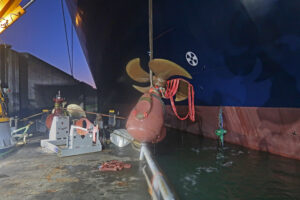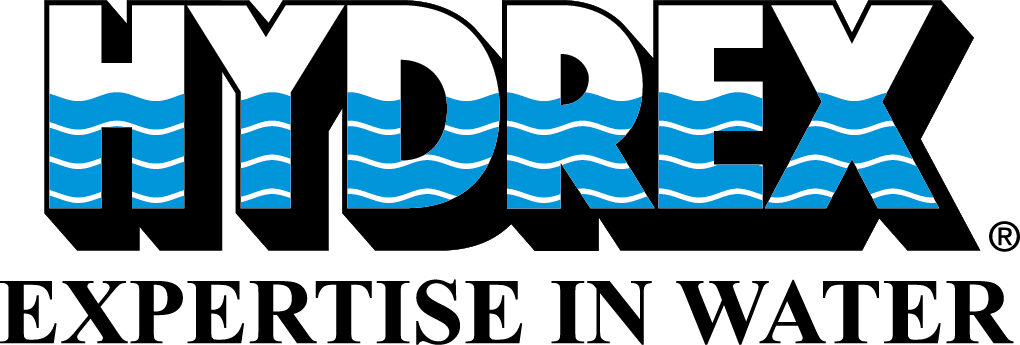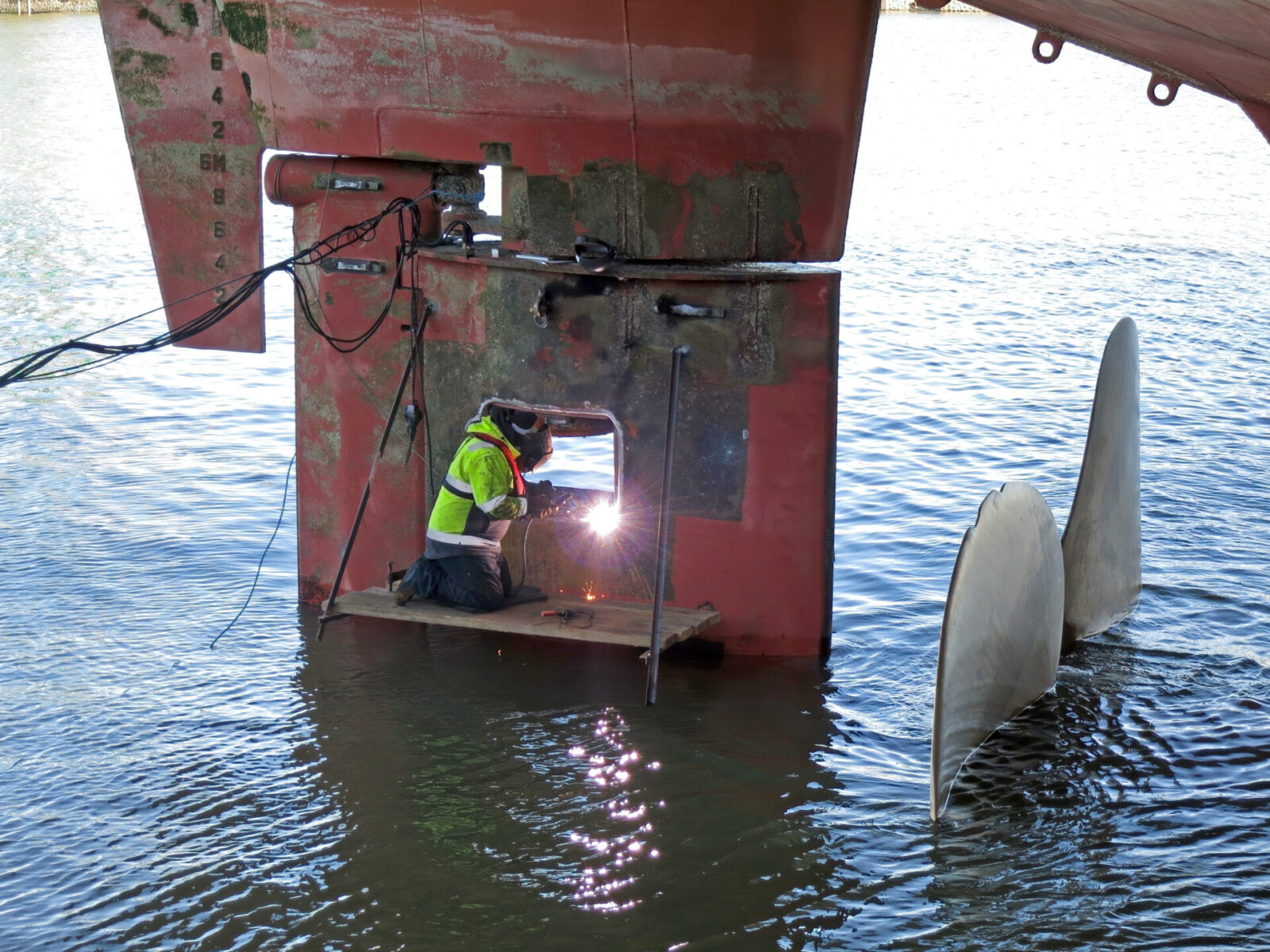For Hydrex’s 50th anniversary we are looking back at the history and a few memorable case studies of each of the services we offer to our customers. This month we are focusing on rudder repairs.
We perform repairs on any type of rudder at anchorage or while the vessel is berthed, without interrupting cargo operations. In most cases these repairs are permanent and do not require follow up. In a few cases, the repairs are temporary and subject to further action when the ship is next in drydock. This is determined by class.
The following case studies give an account of some of the more important underwater rudder repairs performed by Hydrex. They showcase the wide variety of repair solutions we can offer to shipowners.
Emergency flap rudder repair in Greenland
In mid-October 2015, we received an enquiry for an emergency rudder repair on a 67-meter fishing vessel. The ship was operating in the region of Sisimiut, Greenland when a defect occurred on her flap rudder, making it difficult to navigate safely.
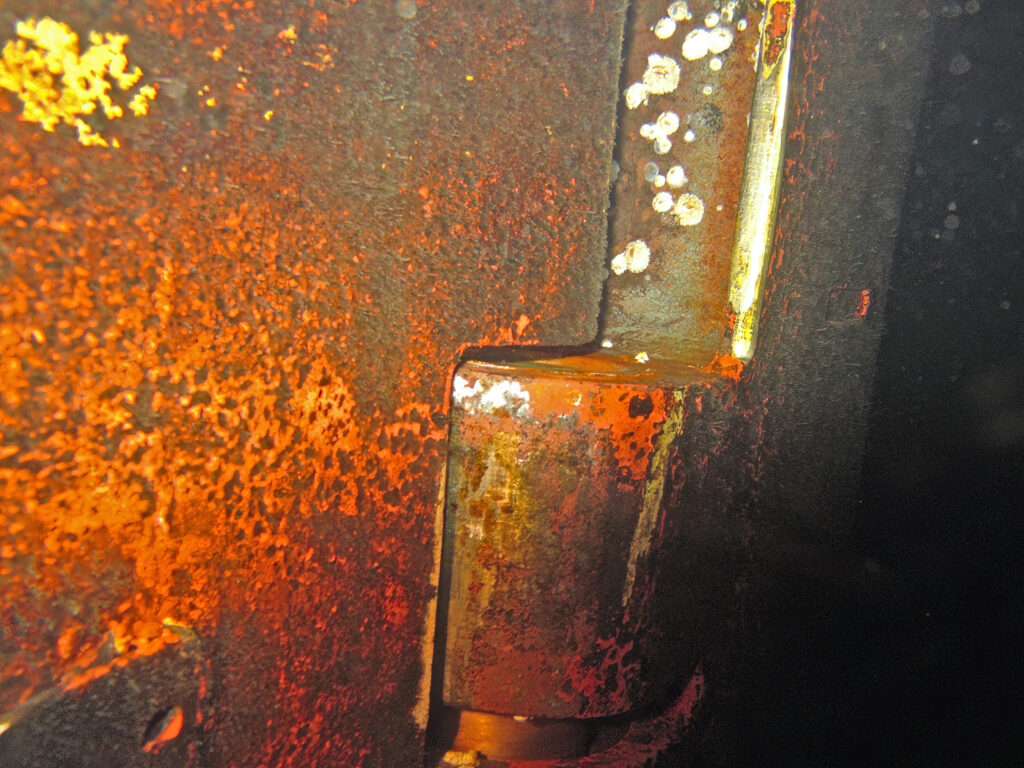
A preliminary inspection by a local diving company revealed that one of the hinges of the rudder flap had come loose. To keep on sailing without a repair posed a great risk as there was a real chance that the damage would worsen. Securing the rudder flap was the only possible underwater solution.
This inspection, combined with drawings received from the OEM, gave our technical department all the information they needed to make the necessary preparations. Steel plates that would be required for the repair were prepared at a local workshop while our team mobilized from our headquarters in Antwerp.
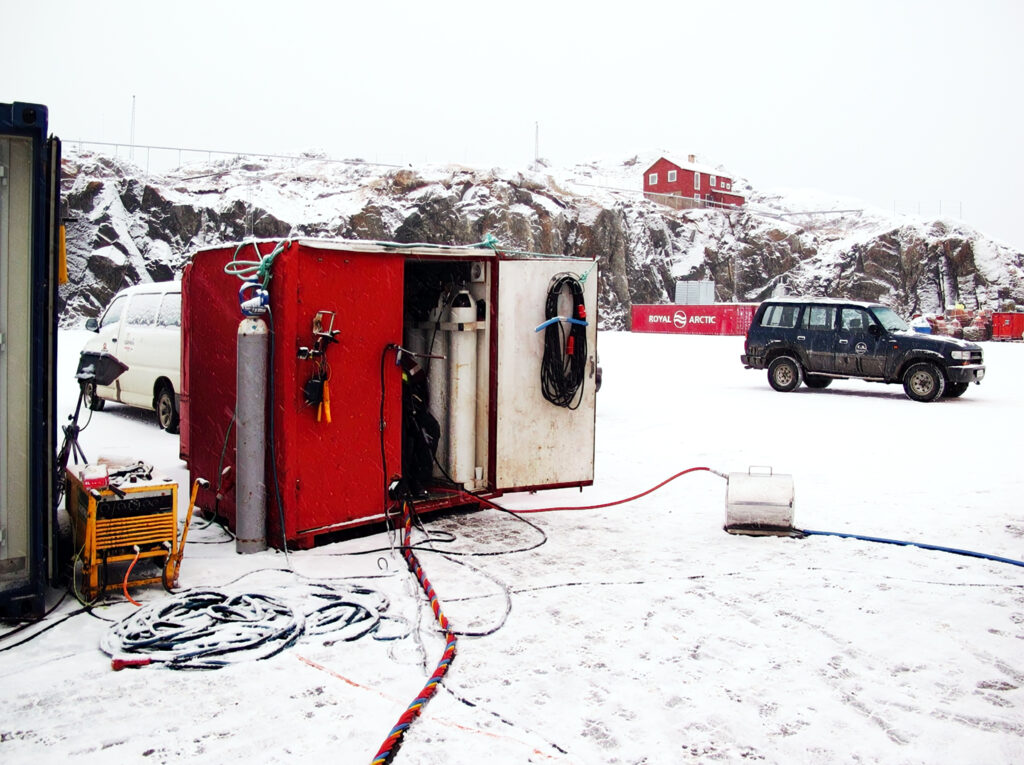
The diver/technicians arrived at the remote location of the vessel just over a day after the green light for the operation had been given. The polar weather conditions of Greenland proved to be no problem for our divers, as they are experienced in delivering the same high quality in difficult circumstances.
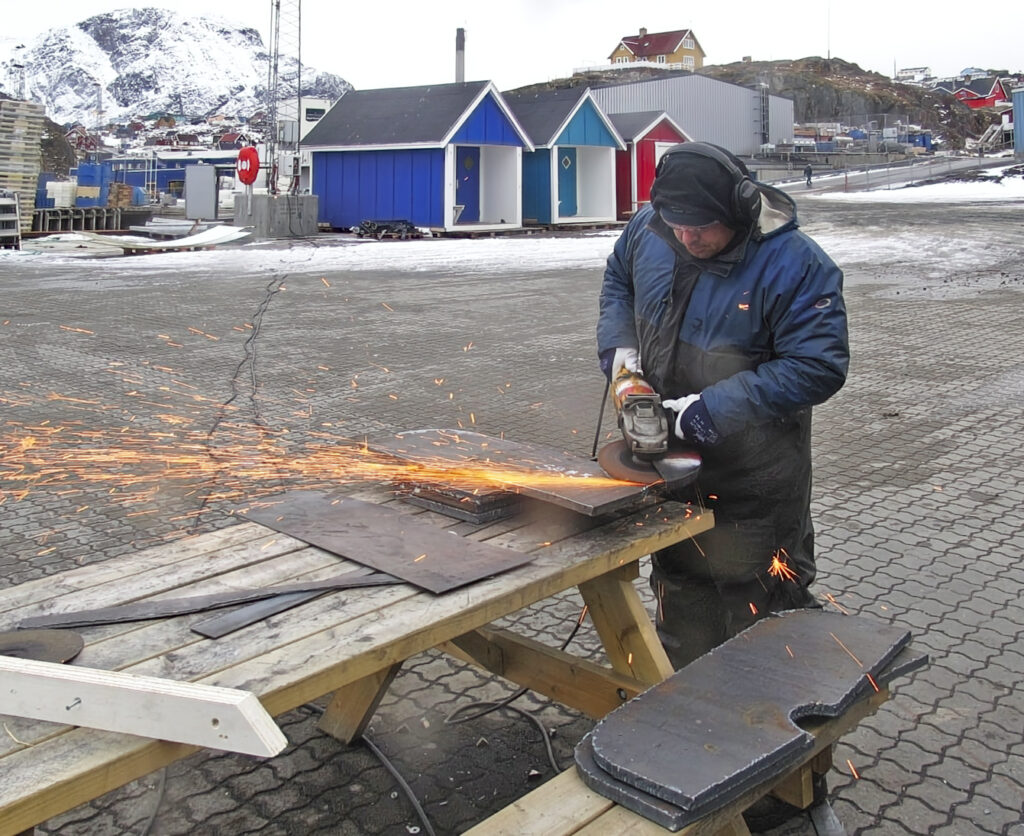
A second underwater inspection was performed by our divers to get the exact measurements for the girders. Next the plates were cut on-site by our team to the exact size. The rudder and its flap were then put in the neutral position. Three girders were placed on each side of the rudder, securing the flap to it. The plates were welded underwater by our divers. A steering test was successfully performed, concluding the repair.
During the initial inspection by the local diving company, large cracks and nicks were discovered on the propeller of the vessel. These were ground out by our team during the same operation. Combining several jobs like this can save an owner the cost of an extra mobilization.
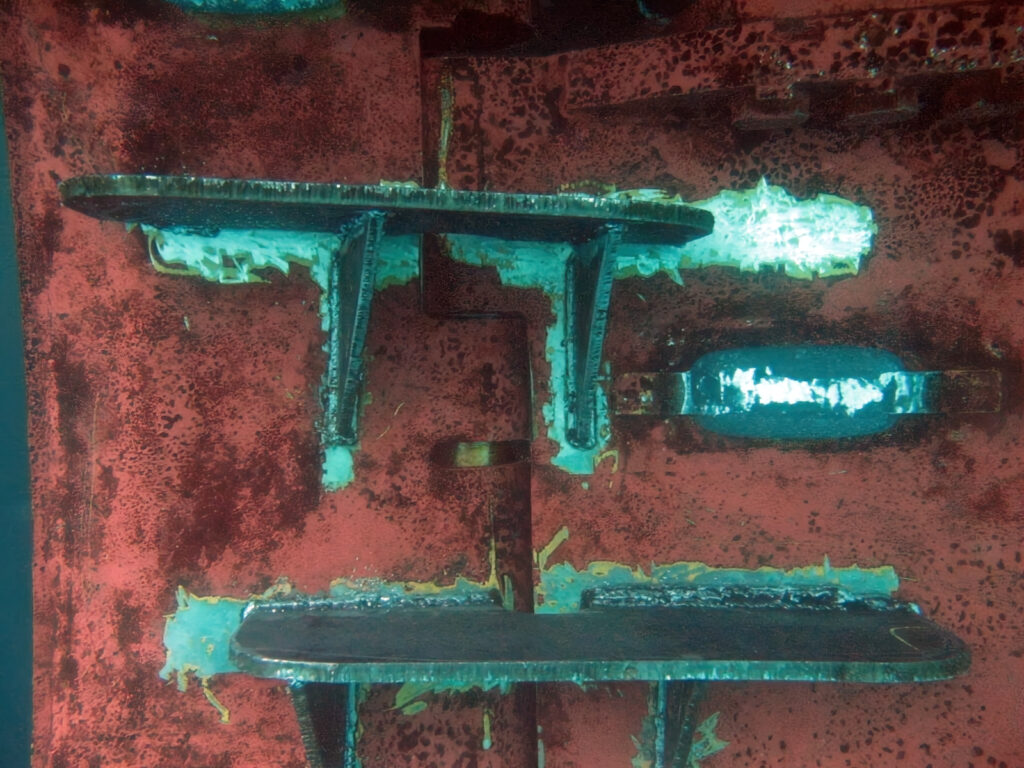
By immediately mobilizing a team to Sisimiut to carry out a temporary repair, we allowed the owner to keep his vessel operating instead of having to plan an unexpected docking. Because of the remote location of the vessel there was no suitable drydock close by. As a result, this would have meant an extended offhire time. With a well calibrated rudder the ship could keep on sailing until the next scheduled drydock visit.
Rudder cover crack repair in Rotterdam
An underwater inspection revealed cracks in the welding seams of both rudder cover plates of a 144-meter tanker. To prevent the pintle nut from corroding, the classification society demanded that the owner have the damage repaired as soon as possible. When the tanker was on its way to Rotterdam, we were contacted to find an on-site solution that would prevent an unscheduled and unwelcome trip to drydock.
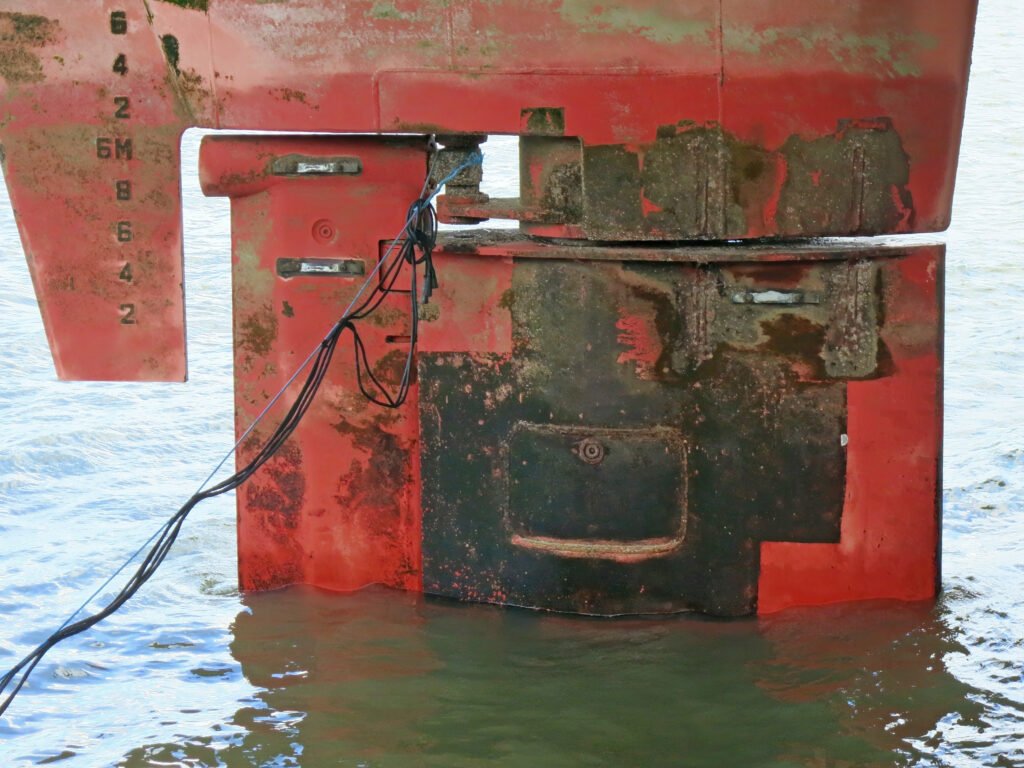
The classification society had given the owner a very strict deadline. It was therefore essential that our technical department come up with a repair plan that could be carried out very quickly. A diver/technician team immediately mobilized to the vessel’s destination so they could start the operation as soon as the ship arrived in Rotterdam.
Because the tanker was empty, the vessel could be trimmed enough to allow a rudder repair above water. The team first carried out a detailed inspection of the rudder cover plates. This enabled them to make a full assessment of the damage and communicate the information to our technical department. A dye check of the cracks quickly revealed that the damage of the cover plate welding seams was so severe that replacing both plates in their entirety was the best option.
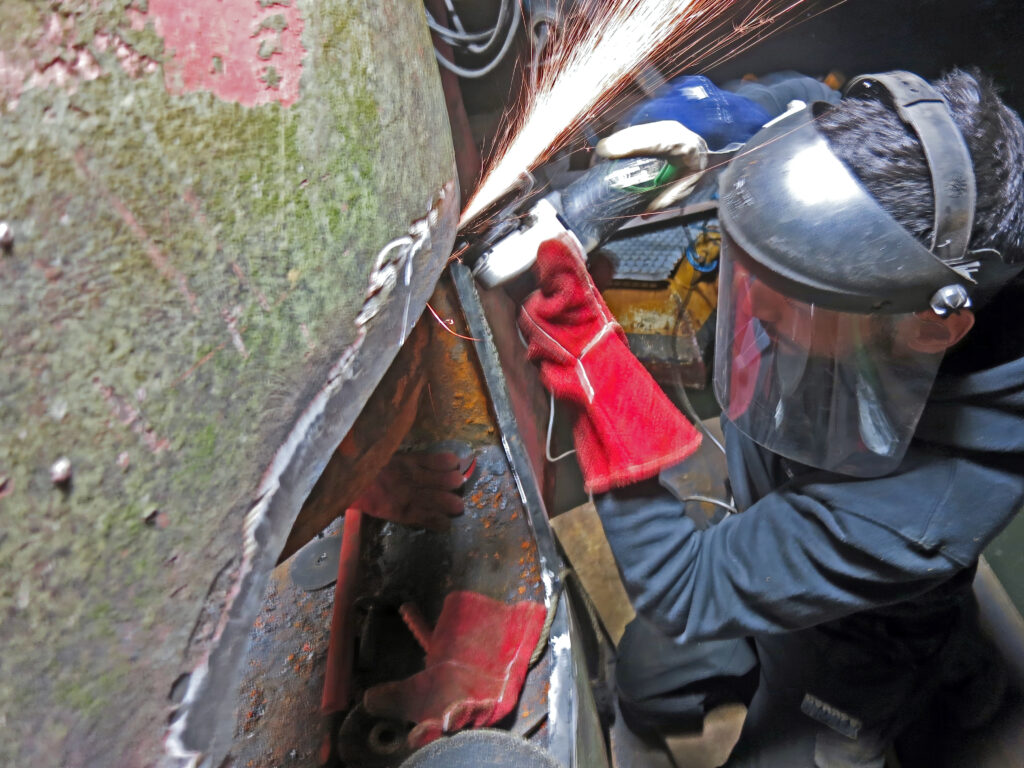
The team removed the plates and beveled the edges of the rudder plate to fit the new inserts. In the meantime, fabrication of two new plates was arranged by our technical department. They needed to be the right shape to fit the curve of the rudder perfectly. They were collected from the supplier and cut to the right size in our fast response center where a large stock of equipment is available for emergency repairs like this.
The plates were then transported to the vessel. Our team fitted them in the rudder plate and secured them with full penetration welds. Ultrasonic and magnetic particles tests were successfully carried out by an independent inspector, finalizing the repair. Seven bolt-on anodes were also installed on each side of the rudder.
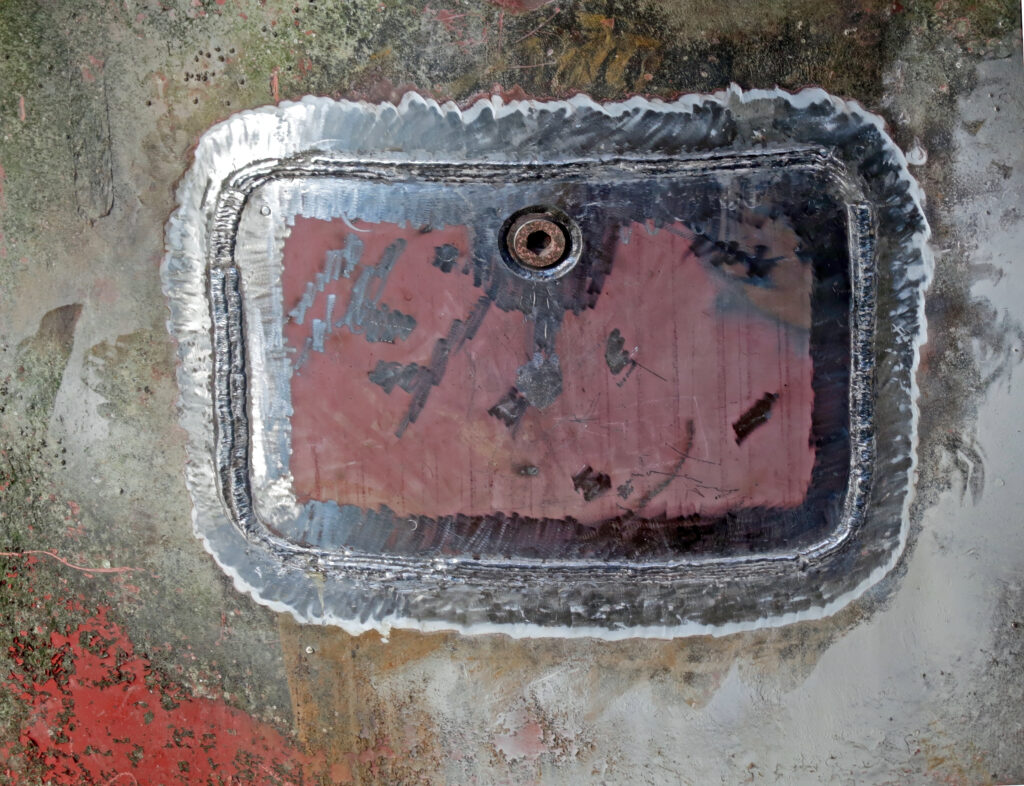
The entire operation was supervised and approved by a surveyor of the classification society and the condition of class was lifted. Our team worked in shifts to finish the repair in the shortest possible time. When they left the tanker, the satisfied owner could sail his vessel again without having to worry about costly off-hire time.
If ever you need assistance with the underwater part of your vessel, give us a call. We can then tell you if the repair is feasible and start working on its handling.
+32 3 213 53 00
hydrex@hydrex.be
Click on the images below for more case studies.

Underwater repair of leaking seal assembly in Trinidad

Underwater bow thruster removal and reinstallation in Australia
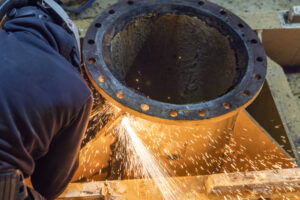
Scrubber overboard pipe repairs in Belgium and the Netherlands

Insert installation in Uruguay prevents loss of contract

Double stern tube seal repair on second vessel in Tasmania confirms customer’s trust
